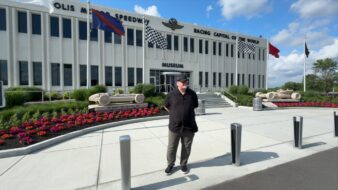Residential construction is definitely on the upswing here in Missoula, MT. We’re quickly approaching the levels we saw before 2008, and I hope we don’t quite hit that peak again.
I say this because the quality of work suffered in ’08. I was strictly doing service at the time, but pressure on all the trades was so high that shortcuts were taken on construction and installation, and it didn’t do any good for the collective tradesmen’s reputation around town. I think everyone breathed a sigh of relief when things slowed down. At least initially.
In the years leading up to the “crash,” I was able to establish a local reputation as someone who could figure out a solution for most plumbing and hydronic problems related to poor workmanship and improper installation. This served me well when I started my own company in 2011.
So, everyone here is getting busy again, but things are a bit different for me this time around. I now own a three-person company, and we do plenty of installation work. As we’ve grown, we’ve been mindful to use the best practices and products for the each application, instead of using a broad-brush approach on everything we encounter. We’ve expanded our comfort zone to better serve our customer base and it’s proven worthwhile.
Warm floors without water
About 60% of our heating work is hydronic. It’s our opinion that there’s no system more comfortable than in-floor radiant, but there are applications where it’s just not feasible.
This spring we were working on a new, 3,500-square-foot residence where heat and AC was being supplied by a heat pump. An additional hydronic system wasn’t in the budget, but the homeowner really wanted floor warming in the master and guest bathrooms. With a total of about 55 square feet, installing a boiler wouldn’t have been cost effective, even an electric boiler.

We decided to try an electric radiant mat product for the first time. After pricing the few systems on the market, we settled on the Watts Radiant HeatWeave. Despite having a one-ton pickup full of tools, we never used anything other than a multi-meter, glue gun and a pair of scissors.
Watts provided everything else need for installation. It came with a “LoudMouth” alarm that sounds if you nick a wire. The kit also included a slab sensor and a thermostat, so that you can program the system to maintain a specific floor surface temperature, or opt for room temperature.
With adhesive strips on both sides of the mat, there’s no specific orientation or direction you need to run. It simply sticks to the subfloor. While reading the directions, the first bathroom took about an hour-and-a-half. The second room took less than an hour.
In the past, electric radiant has always been something I’ve left for an electrician or a tile guy to install. From here on out, it’ll be a source of revenue for us.
Comfort is Queen
While comfort was king in ‘08, efficiency is just as important on new construction projects these days, as I’m sure you know. Homeowners are looking to shrink utility bills, and they’re asking for hi-efficiency equipment.
In the past year we’ve started using heat pump water heaters when a boiler isn’t present. After trying two different brands, we’ve gravitated toward the Bradford White.
The customer who asked us to put in the electric radiant also got an 80-gallon Bradford White AeroTherm™ Series heat pump water heater. Unlike most of the heat-pump water heaters on the market, you’re able to lay the unit on its side during transportation. That’s a plus, because the heat pump unit adds substantially to the tank’s height.
On that note, we’ve also found that the AeroTherm is significantly shorter than many other models, making installation and service a lot easier. The other brand we tried was probably a full foot taller, and about four inches narrower in diameter. Since you’re not supposed to stuff a heat pump water heater in a closet anyway, the diameter is of little concern.

These types of water heaters are more expensive than their standard electric counterparts, but they often qualify for state and local utility rebates and tax credits.
I don’t know about other brands, but the AeroTherm comes standard with a 10-year limited warranty. For an efficiency-minded customer, it makes a lot of sense.
Convenience and conservation
There’s one more product that has cemented its roll on nearly every new construction job we handle now; domestic hot water recirculation systems. When the AeroTherm was installed in the home, so was a Taco SmartPlus domestic hot water recirculation system.
In the mid-2000s, we installed very few DHW recirculation devices, but times have changed. California’s water shortage has raised awareness to the topic in recent years, and people have grown more impatient. Generally speaking, everyone wants hot water ten minutes ago, whether they’re of a conservation mindset or not.
Knowing your demographic helps here. If it’s a job in town, we lead with water conservation. Missoula is an environmentally-savvy place, so mentioning that a DHW recirc system can save up to 12,000 gallons of fresh water each year generally grabs attention.
Outside of town, where bigger, gaudier homes are pretty common, it’s all about convenience. Very rarely, in either of these situations, are customers completely uninterested. In most cases, recirculation systems aren’t cost prohibitive.
The vast majority of the residential new construction we do is custom, in which case we don’t even list DHW recirculation as an option. It’s simply in the bid. If the builder comes back later looking to cut costs, I tell him to put laminate countertops in the guest bathrooms instead of granite, and keep the recirc.
In 90% of our residential projects, and on every commercial job we do, we’re installing dedicated hot water return lines with a SmartPlus circulator. The system’s “smart” mode records each time hot water is called for during a seven day period and then duplicates the pattern for the following week. It can also be set to “pulse” mode, operating for 150 seconds every ten minutes, maintaining hot water at all fixtures.
For new construction or retrofits where there’s crawlspace access, we can typically run dedicated return lines and install the system for under $1,000. If dedicated lines aren’t a possibility, we’ll go to a system like Taco’s HotLink, with a crossover valve that allows hot water to return to the water heater via the cold water line. This approach has an even smaller price tag.
As I said, the new construction game has changed since the last economic upswing. Competition is arguably even stiffer, but the quality of work has much improved by all the trades. We’ve evolved with the market by providing the best service we know how, and finding new sources of revenue.
 By Andy Mickelson, owner, Mickelson P&H. Andy has built a solid foundation for his business through hard work and perseverance. His performance on high profile jobs in the Missoula, Montana area have placed him at the top of the list for area customers seeking a knowledgeable contractor in the plumbing, hydronic and HVAC field. Andy has served as a United Association Instructor at the Missoula Joint Apprentice Training Center for the Local 459. His passion for industry education, advancement and professionalism make him a well-respected local businessman.
By Andy Mickelson, owner, Mickelson P&H. Andy has built a solid foundation for his business through hard work and perseverance. His performance on high profile jobs in the Missoula, Montana area have placed him at the top of the list for area customers seeking a knowledgeable contractor in the plumbing, hydronic and HVAC field. Andy has served as a United Association Instructor at the Missoula Joint Apprentice Training Center for the Local 459. His passion for industry education, advancement and professionalism make him a well-respected local businessman.








Join the conversation: